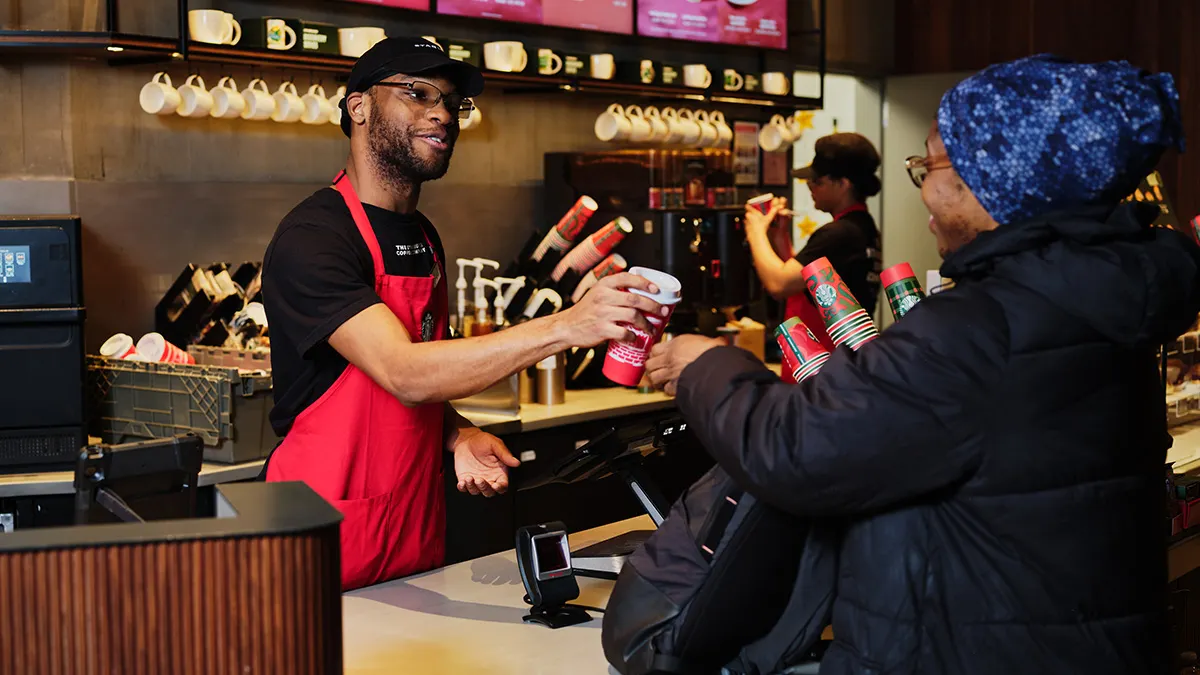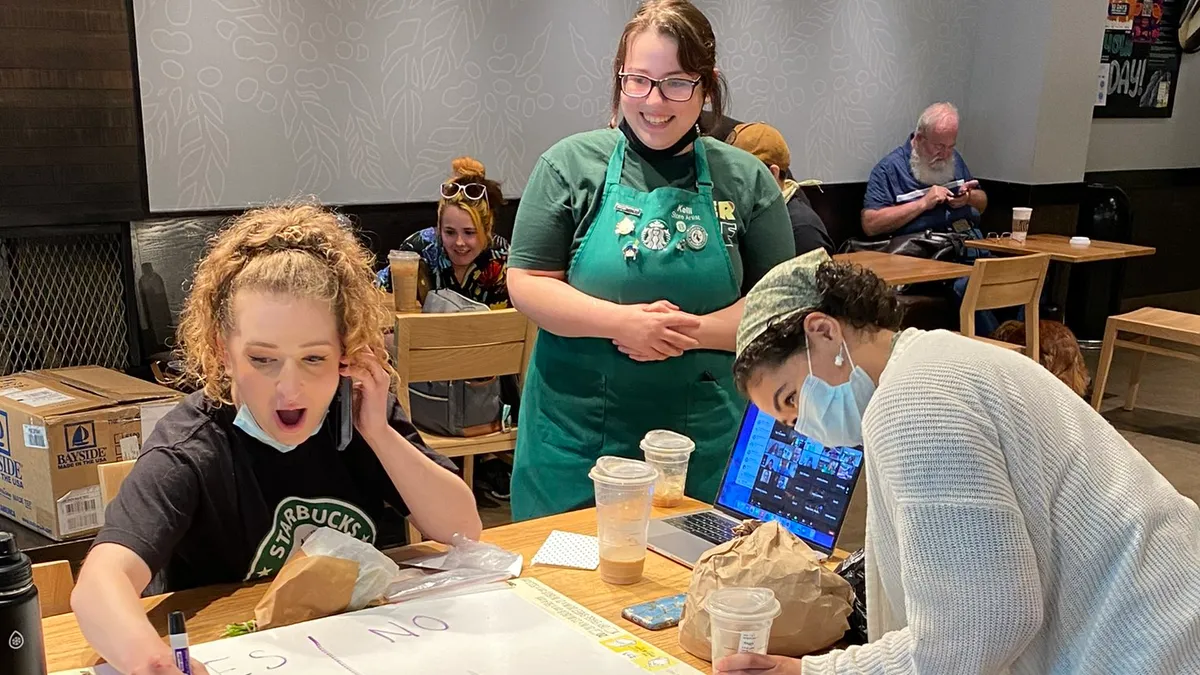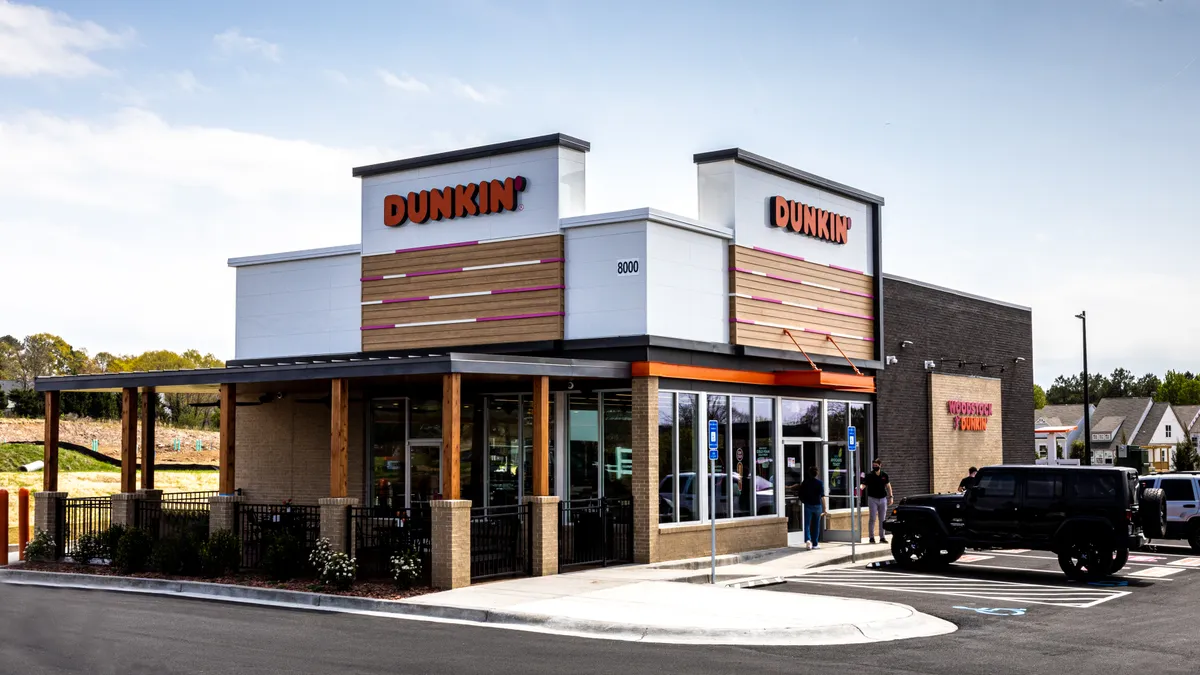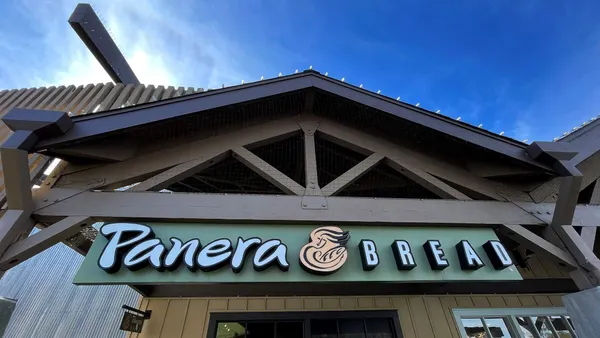Dive Brief:
- Starbucks’ Reusable Red Cup day on Thursday was the chain’s strongest featuring the popular drink container in company history, CEO Brian Niccol said Friday in a news post to partners. The chain’s holiday launch on Nov. 6, which included new merchandise such as the Bearista cup, was the coffee brand's biggest sales day ever in North America, he added.
- Traffic also spiked by 37.8% on Nov. 6, far outpacing the August rollout of the Pumpkin Spice Latte, according to Placer.ai data. Traffic remained elevated in the days following the Bearista launch as guests sought out the limited-time merchandise, leading to fights at some stores and resale listings upwards of $1,000 on eBay
- Starbucks experienced the surge in traffic and sales on Nov. 6 despite a 65-store strike launched by Starbucks Workers United as union employees seek better pay and working conditions.
Dive Insight:
The holiday launches could signal a shift in same-store sales for Starbucks, which have declined for several quarters until flattening in the company’s fiscal fourth quarter ending Sept. 28. Traffic was down during this period, but transactions were positive in September and October, Niccol said during the chain’s recent quarterly earnings call.
The rollout of limited-time merchandise also is a tactic that is serving the chain well, even though consumers have been pulling back on spending. Other chains, like Cava, Chipotle and Taco Bell, also offer merchandise, but largely through online shops that wouldn’t necessarily impact in-store traffic.
“Even in an era of trading down, consumers are still willing to splurge on items that feel special – especially those that offer a sense of belonging to a cultural moment. Value matters, but it isn’t everything,” Lila Margalit, a content manager at Placer.ai, wrote in a report. “The Bearista proved that creativity and emotion can rival even the most generous giveaways.”
What helped make these launches successful was that coffee houses were well staffed and leaders were engaged, Niccol said. He added this is reflective of its August rollout of the coffee chain’s Green Apron Model, which included more hours for store-level employees, larger rosters and a Smart Queue order sequence algorithm helping decrease service times to four minutes or less.
Starbucks said earlier this year it would add thousands of assistant managers to its cafes and invest $500 million in improving labor. The company is also working on returning to its coffeehouse roots as part of its Back to Starbucks plan established under Niccol’s leadership. It’s working on a redesign as well, which is meant to create more comfortable seating and a cafe experience.













